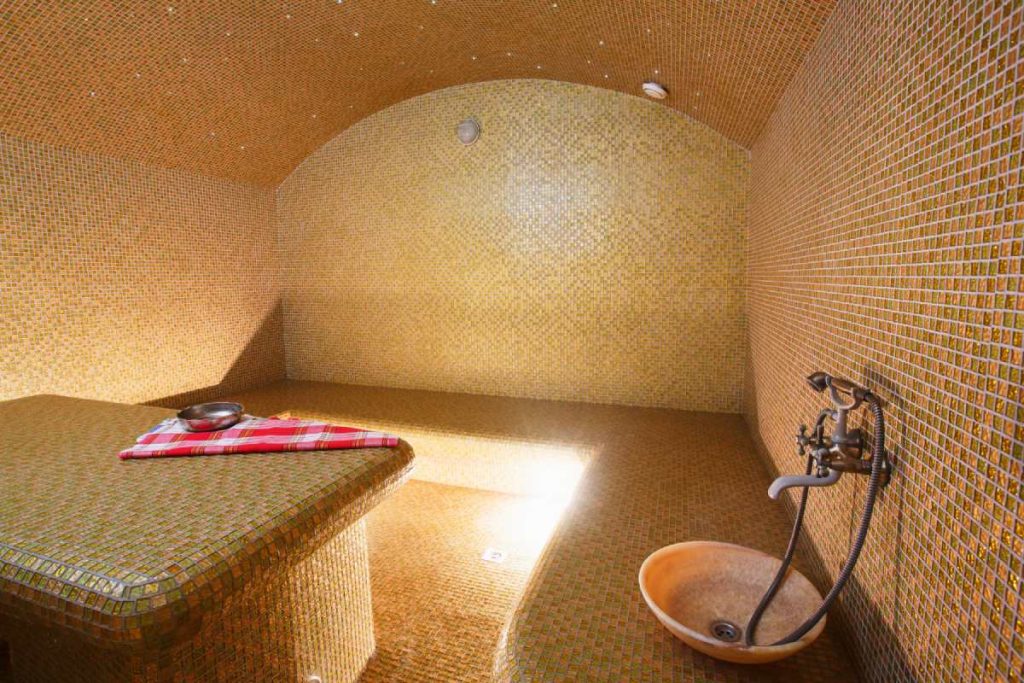The Origins and Philosophy of the Hammam
The Hammam is a centuries-old bathing tradition rooted in Roman, Byzantine, and Ottoman cultures. More than just a place for physical cleansing, the Hammam has historically served as a space for community, spiritual renewal, and emotional balance. It represents a holistic approach to wellness, blending heat, water, and ritual to purify the body and calm the mind.
The Step-by-Step Process of the Hammam
A typical Hammam ritual begins with time spent in a warm room that gradually prepares the body for deeper treatments. This is followed by exposure to steam, which opens the pores and softens the skin. The core phase of the Hammam involves a full-body exfoliation with a coarse mitt called a “kese,” followed by a luxurious foam massage and rinsing with warm water.
Health Benefits of the Traditional Hammam
The health benefits of the Hammam go far beyond surface-level cleansing. Regular Hammam sessions improve circulation, promote detoxification, relieve muscle tension, and support healthy skin regeneration. The steam and heat encourage sweating, which helps eliminate toxins and unclog pores, while the massage improves lymphatic flow and physical relaxation.
Modern Adaptations of the Hammam
In recent years, the Hammam has evolved to meet modern wellness standards while preserving its ancient roots. Contemporary spas now offer private or couples’ Hammam suites, customized aromatherapy options, and enhanced comfort elements. Yet the core ritual—steam, scrub, foam, and rinse—remains unchanged, proving the enduring value of this timeless practice.
Emotional and Mental Wellness Through the Hammam
The Hammam isn’t only about physical health—it’s also a sanctuary for the mind. Stepping into the serene, steamy environment of the Hammam helps you disconnect from daily stressors and reconnect with your inner self. The rhythm of the treatments, the warmth of the water, and the silence of the space combine to promote mindfulness and emotional clarity.
Why the Hammam Still Matters in Modern Life
Despite the rise of high-tech wellness trends, the ancient Hammam continues to offer unmatched therapeutic value. In a world where stress and digital overload are constant, the Hammam provides a rare opportunity to slow down, detox, and simply be. It bridges past and present by offering a natural, accessible path to holistic well-being in the modern age.
Conclusion
The Hammam remains a powerful wellness ritual that speaks to our need for connection, cleansing, and calm. By embracing the Hammam in today’s world, we honor a rich cultural tradition while giving our bodies and minds the healing attention they deserve. Whether you’re new to this ritual or returning to it, the hammam offers timeless benefits with every visit.
Frequently Asked Questions
- What is a Hammam?
A Hammam is a traditional steam bath and cleansing ritual originating from Middle Eastern and Mediterranean cultures. - What happens during a Hammam treatment?
The Hammam typically includes steam bathing, body scrubbing, foam massage, and rinsing. - Is the Hammam suitable for first-timers?
Yes, the Hammam is beginner-friendly and guided by experienced attendants. - How long does a Hammam session take?
A full Hammam session usually lasts between 60 and 90 minutes. - Are Hammams gender-segregated?
Many Hammam facilities offer separate areas or time slots for men and women. - Do I need to bring anything to a Hammam?
Most Hammam spas provide towels and slippers, but you may bring your own toiletries. - Can a Hammam help with stress?
Yes, the Hammam promotes deep relaxation and mental clarity through steam and massage. - Is it safe to visit a Hammam while pregnant?
It’s best to consult your doctor before attending a Hammam if you’re pregnant. - What should I wear in a Hammam?
You’ll typically wear a pestemal towel, provided by the Hammam, during your session. - How often should I visit a Hammam?
Visiting a Hammam once a month is ideal for maintaining its health and wellness benefits.
